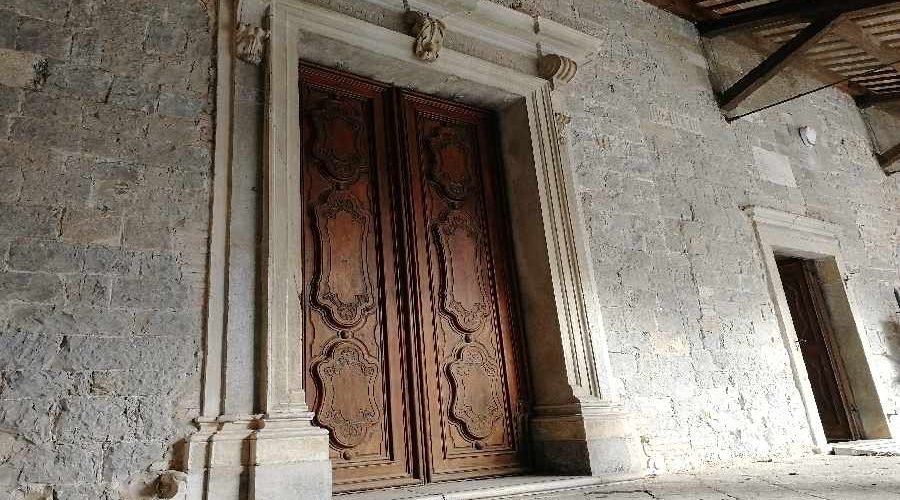To access the Monastery and the Lombard Temple, you have to walk through the small Church of San Giovanni in Valle. It is one of the oldest buildings in the city, and it is the second most important church after the city’s cathedral. A small eighteenth-century portico introduces you to the church, characterized by three lowered arches resting on circular columns with smooth capitals.
There are a some sculptural fragments dating back to the sixth and seventh centuries, which up to the eighteenth century were walled up on the facade and which are presumed to come from the original decoration of the Church. This would seem to suggest its origin in the context of the Longobard Gastaldaga city as a palatine chapel. Surely it must have existed towards the middle of the 7th century when inside, in front of the presbytery, Lombard nobles were buried in monumental tombs. It is hypothesized that the Church was used by the Cividalese nobility since the dawn of the Lombard presence in the city. Between the end of the 9th and the beginning of the 10th century, it was transformed into a monastic church.
But little is known about its original shape. Its current layout is the product of transformations that took place between the medieval age and the Renaissance period, before the great expansion that led to the current configuration of the Church.
The interior is simple and intimate. It preserves several seventeenth-eighteenth-century paintings on the walls and two side altars in faux marble. Near the left altar, you can see a wrought iron grate through which communion was once administered to cloistered nuns.
The protagonist of the apse area is the imposing high altar in Baroque style, enriched with important friezes and statues and containing three altarpieces by Ercole Graziani.
Following renovations due to a lightning strike that damaged the choir in 1751, Lombard burials with rich furnishings were found in front of the steps leading to the altar. These are three tombs in sarcophagus, a golden cross with human figures and a disc depicting a deer, in gold all of which are visible in the city’s Archaeological Museum.
The type of burials and the rich equipment inside makes us believe them to be close in time to the tomb of Duke Gisulfo which emerged in Piazza Paolo Diacono, in the heart of the city. In both cases they are burials of high-ranking personalities of the Lombard nobility of Cividale.
But this is a story for another time...





